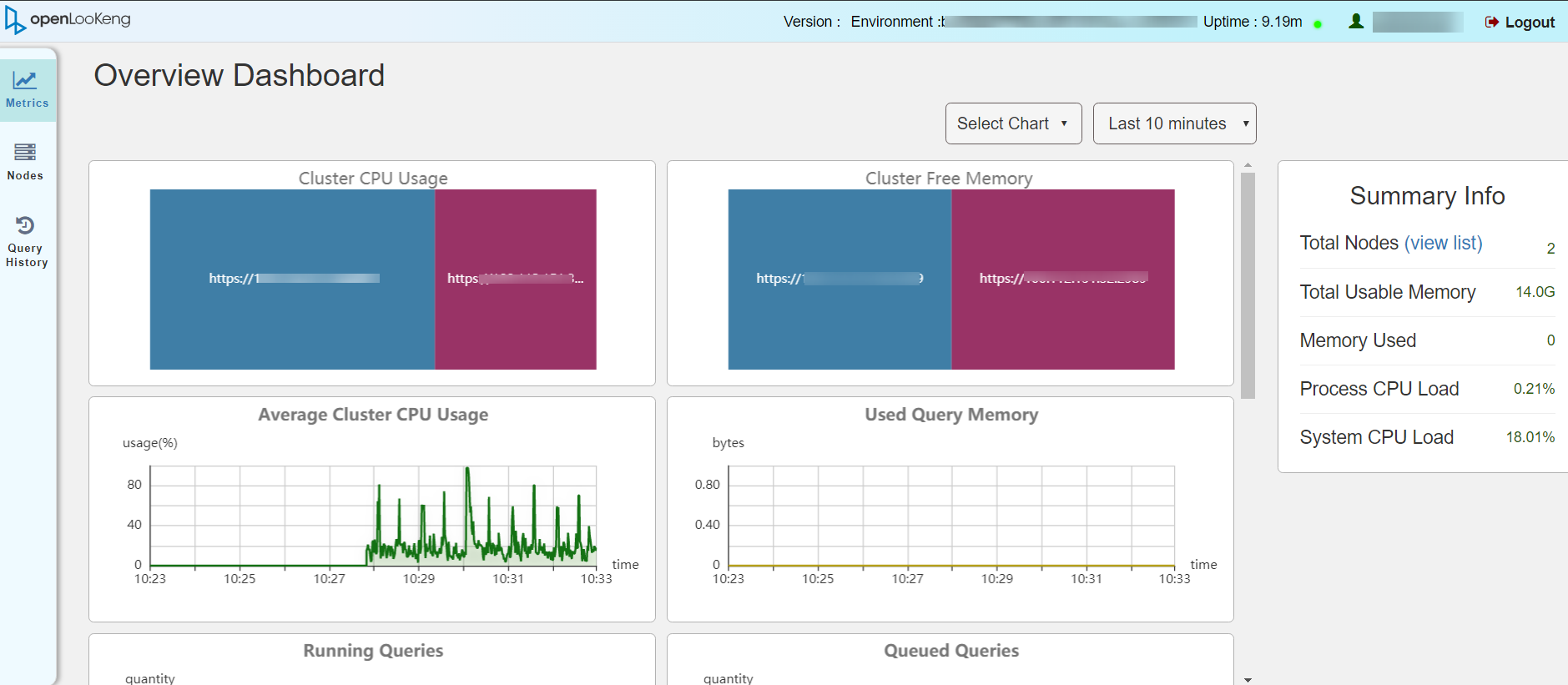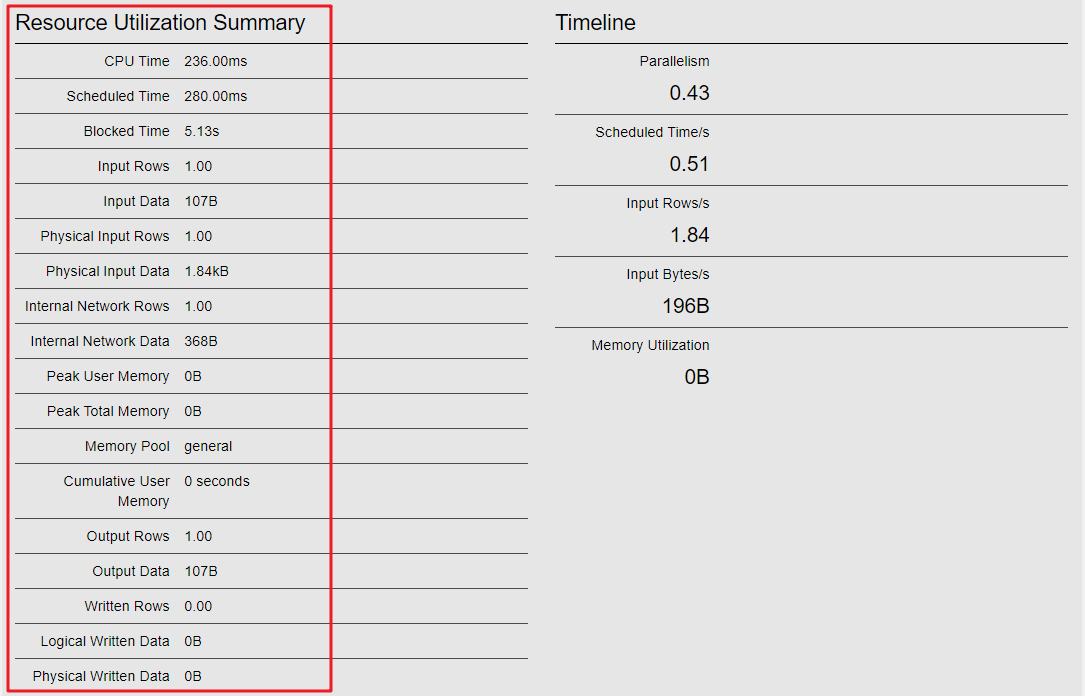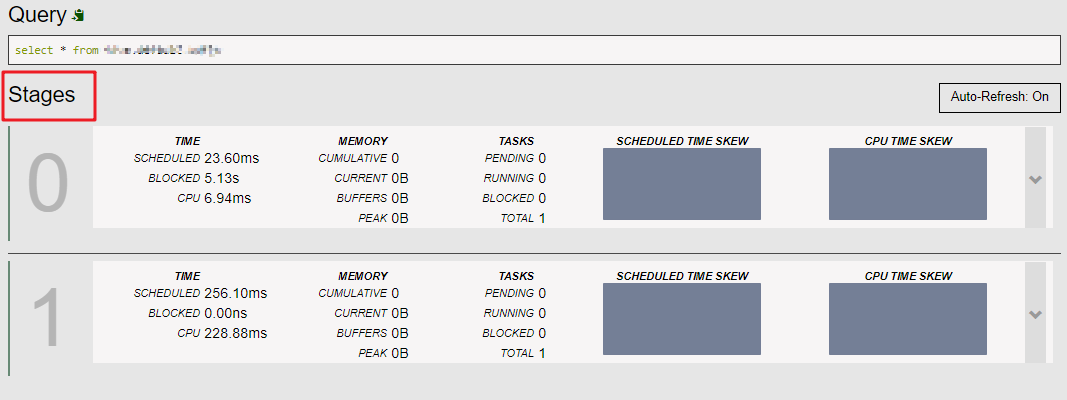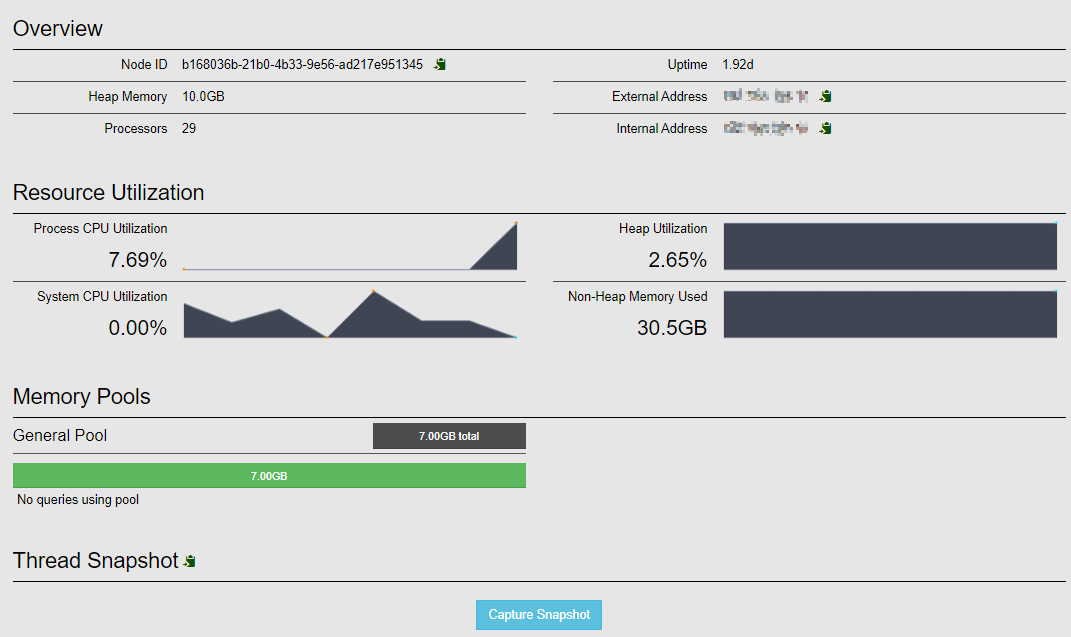Viewing the Instance Monitoring Page¶
Scenarios¶
On the HetuEngine web UI, you can view the detailed information about a specified service, including the execution status of each SQL statement. If the current cluster uses dual planes, a Windows host that can connect to the cluster service plane is required.
Note
You cannot view the compute instance task monitoring page using Internet Explorer.
Prerequisites¶
You have created an administrator for accessing the HetuEngine web UI. For details, see Creating a HetuEngine User.
Procedure¶
Log in to FusionInsight Manager as an administrator who can access the HetuEngine web UI and choose Cluster > Name of the desired cluster > Services > HetuEngine. The HetuEngine service page is displayed.
In the Basic Information area on the Dashboard tab page, click the link next to HSConsole WebUI. The HSConsole page is displayed.
Locate the row of the target Instance ID, and click LINK in the WebUI column of the row. The compute instance task monitoring page is displayed on a new page. The Query History page is displayed for the first access. Click Metrics to view the compute instance task monitoring page.

Figure 1 Compute instance task monitoring page¶
Table 1 Metric description¶ Metric
Description
Cluster CPU Usage
Indicates the CPU usage of the current instance.
Cluster Free Memory
Indicates the free memory of the current instance.
Average Cluster CPU Usage
Indicates the average CPU usage of the current instance.
Used Query Memory
Indicates the memory used by the current instance.
Running Queries
Indicates the number of tasks concurrently executed on the current instance.
Queued Queries
Indicates the number of tasks to be executed in the waiting queue on the current instance.
Blocked Queries
Indicates the number of blocked tasks on the current instance.
Active Workers
Indicates the number of valid Workers on the current instance.
Avg Running Tasks
Indicates the average number of running tasks in the current instance.
Avg CPU cycles per worker
Indicates the average CPU cycles of each Worker on the current instance.
Filter query tasks by State on the page.

Figure 2 Filtering tasks by State¶
Table 2 State description¶ State
Description
Select All
Views tasks of all statuses.
Queued
Views the tasks to be executed in the waiting queue.
Waiting For Resources
Views the tasks that wait for resources.
Dispatching
Views the tasks that are being dispatched.
Planning
Views the tasks that are being planned.
Starting
Views the tasks that start running.
Running
Views running tasks.
Finishing
Views the tasks that are being finished.
Finished
Views the finished tasks.
Failed
Views failed tasks, which can be filtered by failure cause.
Click a task ID to view the basic information, resource usage, stages, and tasks. For a failed task, you can view related logs on the detail query page.

Figure 3 Viewing task details¶

Figure 4 Task resource utilization summary¶

Figure 5 Stages¶
Table 3 Stages monitoring information¶ Monitoring Item
Description
SCHEDULED TIME SKEW
Indicates the scheduled time of the concurrent tasks on a node in the current stage.
CPU TIME SKEW
Indicates whether concurrent tasks have computing skew in any stage phase.

Figure 6 Tasks¶
Table 4 Tasks monitoring items¶ Monitoring Item
Description
ID
Indicates the ID of the task that is concurrently executed in multiple phases. The format is Stage ID:Task ID.
Host
Indicates the Worker node where the current task is being executed.
State
Indicates the task execution status, including PLANNED, RUNNING, FINISHED, CANCELED, ABORTED, and FAILED.
Rows
Indicates the total number of data records read by a task. The unit is thousand (k) or million (M). By analyzing the number of data records read by different tasks in the same stage, you can quickly determine whether data skew occurs in the current task.
Rows/s
Indicates the number of data records read by a task per second. By analyzing the number of data records read by different tasks in the same stage, you can quickly determine whether the network bandwidth of the node is different and whether the node NIC is faulty.
Bytes
Indicates the data volume read by a task.
Bytes/s
Indicates the data volume read by a task per second.
Elapsed
Indicates the task execution duration.
CPU Time
Indicates the CPU time used by a task.
Buffered
Indicates the buffer size of a task.
Click the "Host" link to view the task resource usage of each node.

Figure 7 Resource usage of the Task node¶
Table 5 Monitoring metrics of node resources¶ Name
Description
Node ID
Indicates the host ID.
Heap Memory
Indicates the maximum heap memory size.
Processors
Indicates the number of processors.
Uptime
Indicates the running duration.
External Address
Indicates the external IP address.
Internal Address
Indicates the internal IP address.
Process CPU Utilization
Indicates the physical CPU utilization.
System CPU Utilization
Indicates the system CPU utilization.
Heap Utilization
Indicates the heap memory utilization.
Non-Heap Memory Used
Indicates the non-Heap memory size.
Memory Pools
Indicates the memory pool size of the current Worker node.